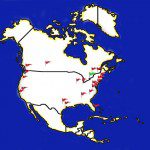John Macfarlane and The Walrus: a lovely coda
One day early on in my internship at The Walrus, the magazine’s managing editor Kyle Wyatt ushered me and three other interns into the boardroom. “You are all very, very lucky to be working right outside the office of John Macfarlane,” Wyatt said, his voice dropping conspiratorially.
So we were understandably nervous when Macfarlane sat down with us one subsequent afternoon. Surrounded by stacks of bound volumes, he regaled us with stories from his years in the trade, beginning in 1965 at The Globe and Mail and then to the Toronto Star in 1968. There were decades spent on the mastheads of seemingly every Canadian magazine of the last half-century: Maclean’s and Toronto Life, Saturday Night and Weekend. The National Magazine Award Foundation had already granted Macfarlane the outstanding achievement award by the time he emerged from semi-retirement to edit The Walrus in 2008. Today, that coda comes to an end.
After 50 years in the industry, Macfarlane is retiring, and this will be his final day in the office. “A lovely coda,” he says, reflecting on his time at The Walrus in an interview with the Review before Christmas. “I would say, in retrospect, a much-to-be-wished-for coda.”
When my professor asked me to write something for the occasion of Macfarlane’s retirement, I was assigned first to read David Remnick’s “Last of the Red Hots,” in which the writer reflects on the great Ben Bradlee from his own perspective as a lowly summer intern at the Washington Post. I met Macfarlane also as an intern, and though he has none of the braggadocio, he was, in many ways, my own Bradlee, right down to the office setup: a spare, white room, his desk facing a window that looked out on his staff. Interns sat at a carrel of desks right in his line of sight, and every day we tried conspicuously to perform small miracles of fact-finding in the hopes that he might notice.
During the fact-check on a feature by Tom Jokinen about the NDP’s move away from its socialist roots, one scene at the party’s leadership convention referenced an unnamed man wearing a purple wig borrowed from his wife. Without a name to go on, we looked through hundreds of convention photos posted online, until I found one that included a purple-wigged man standing underneath a union banner. This particular union represented auto workers from a handful of shops in St. Catharines. A few phone calls later, I had the man on the phone confirming that he had indeed borrowed the wig from his wife. The other interns whooped and high-fived noisily when I hung up. And Macfarlane looked on approvingly from his office. He said nothing at the time—his way was always more subtle.
As editor, Macfarlane is widely credited with rescuing what has since become Canada’s most decorated magazine. Shelley Ambrose, the publisher who hired both Macfarlane and his successor, Jonathan Kay, credits Macfarlane with giving the magazine “an interior architecture” and balanced mix of stories: reportage, fiction, photo essays. “The longer John was here, the better the pitches we were receiving became, and the better the manuscripts were when they arrived,” Ambrose says.
Before Macfarlane arrived at the magazine, it never ran profiles. In the anniversary issue, he ran one of his favourite Walrus pieces ever: Ron Graham’s 10,000-word profile of Prime Minister Stephen Harper. Since then, Macfarlane has often pointed out that if The Walrus didn’t do the longform profile of Stephen Harper today, it wouldn’t exist. “Where else could it exist?” he challenges me. “Newspapers kind of stick their toe in the water where longform journalism is concerned, but that’s about it.”
According to an apocryphal story relayed to interns after-hours in the magazine’s “foreign bureau” (a classic Walrus euphemism for the O’Grady’s pub nearby), founding editor David Berlin once encountered Vanity Fair editor Graydon Carter at a glamorous Manhattan party. “Why The Walrus?” Carter asked. “Because no one ignores a walrus,” went Berlin’s proud retort. As he leaves their fold today, The Walrus would be wise not to ignore Macfarlane’s legacy.
Correction: An earlier version of this post stated Ron Graham’s profile of Stephen Harper appeared in the first edition of the magazine Macfarlane published as editor in 2009. This profile appeared in the 2013 anniversary edition.
Thanks to WalrusGala for the featured image.














Pingback: 2015 · thewalrus.ca